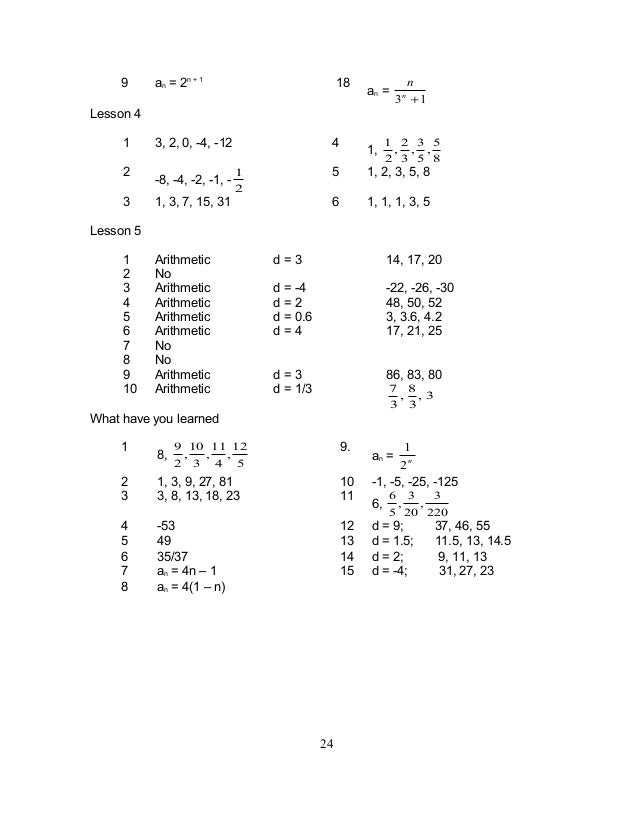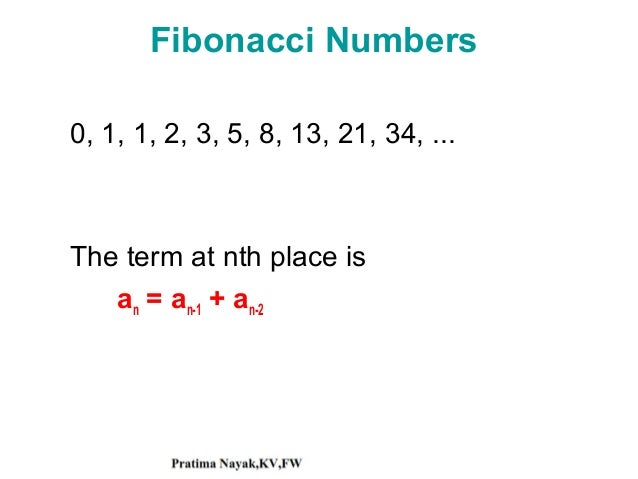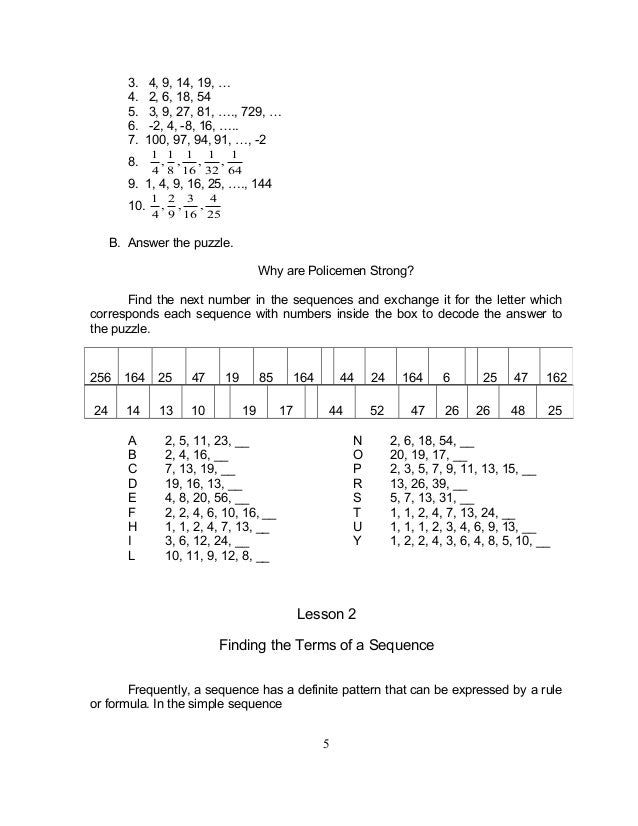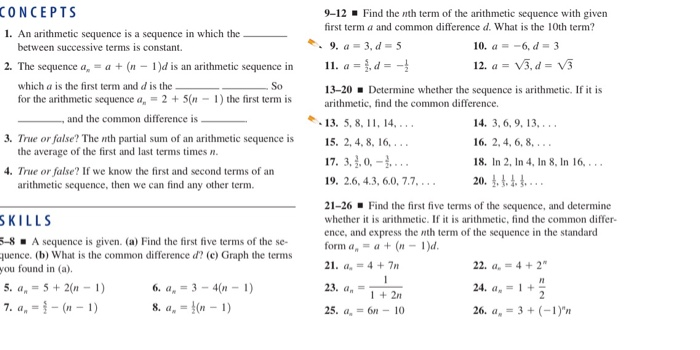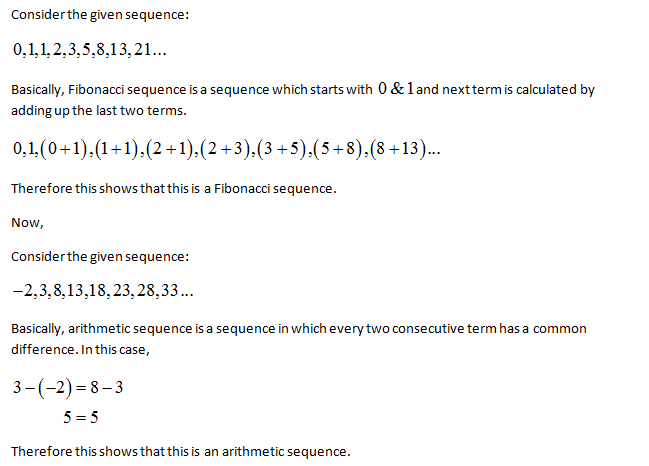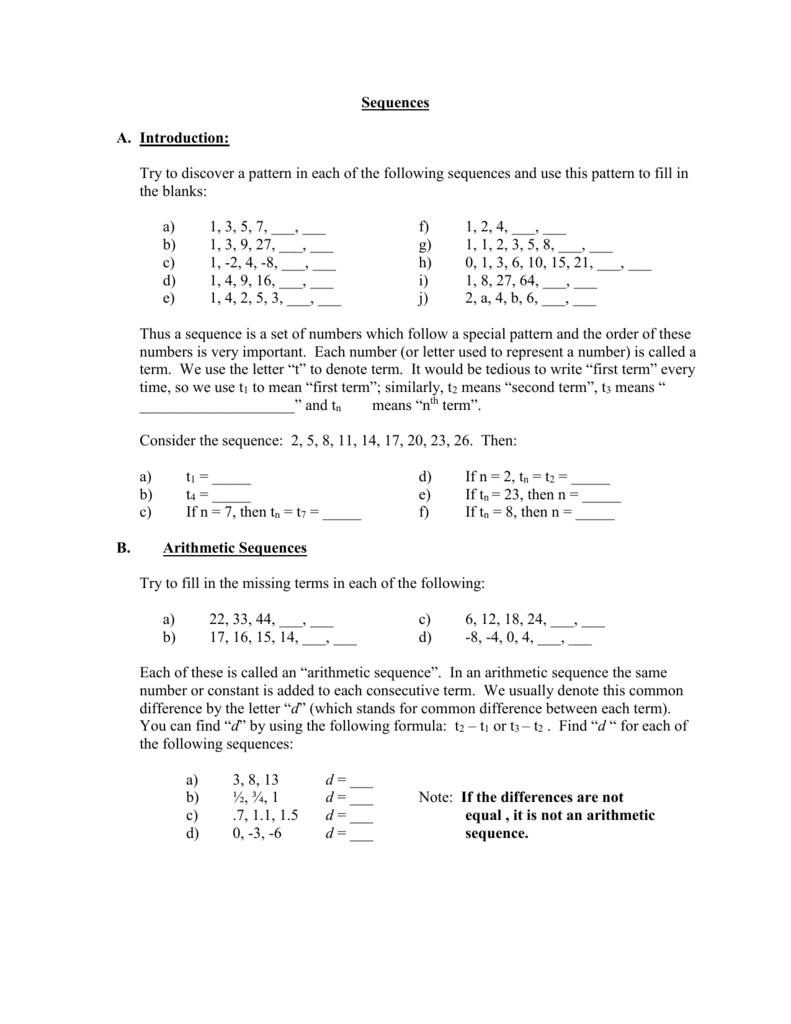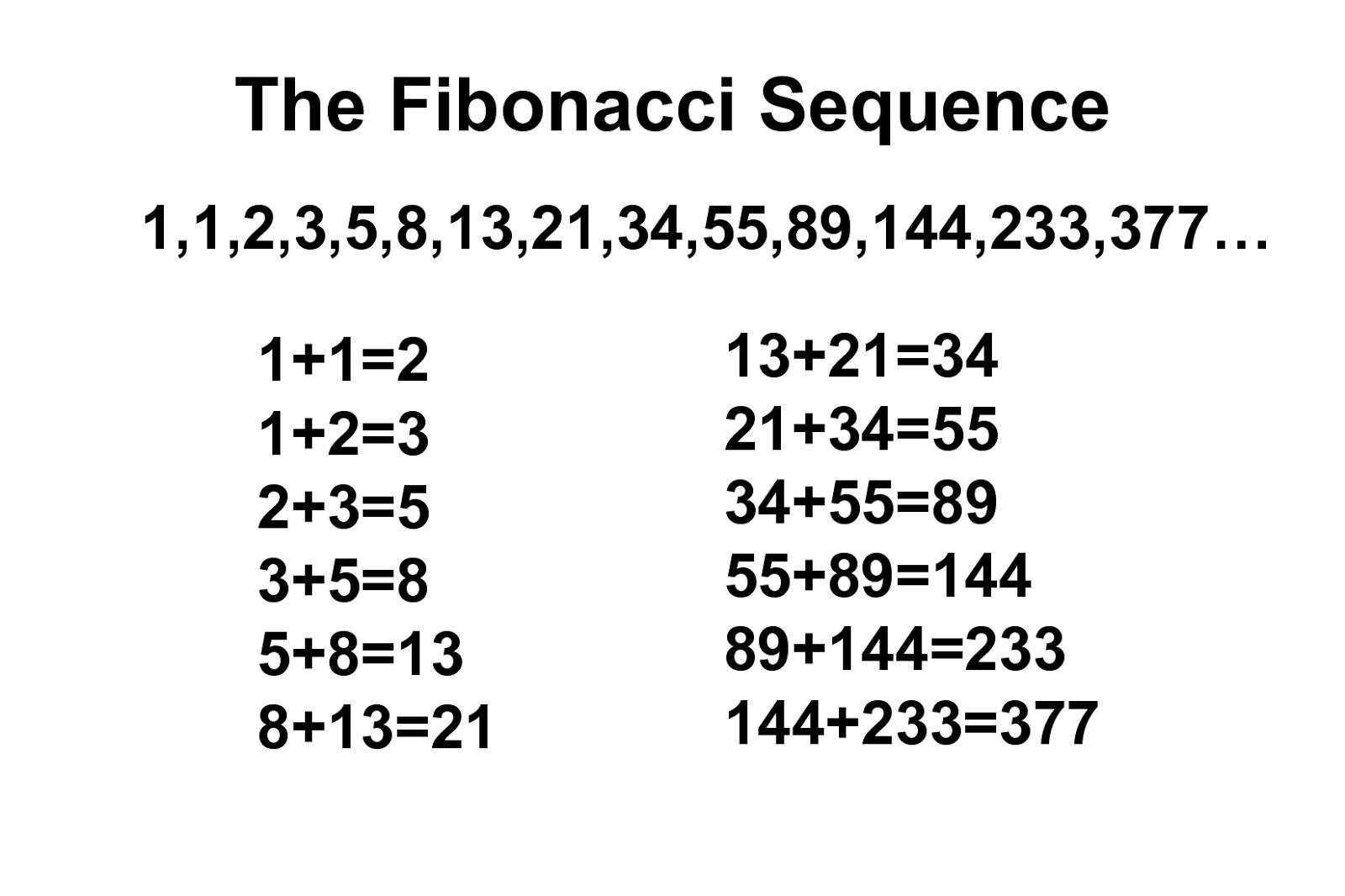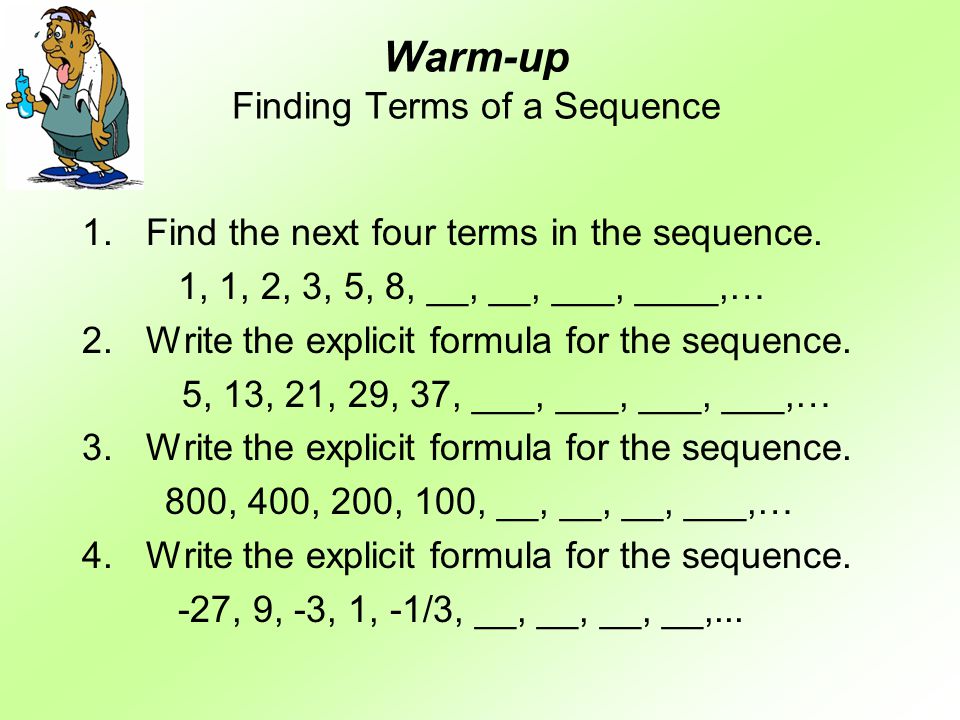Arithmetic Sequence 1 1 2 3 5 8
A whiteboard whiteboard eraser and two coloured markers.
Arithmetic sequence 1 1 2 3 5 8. A 10 2 10 1 2 20 so the 10 th term of this arithmetic sequence would be 20. The fibonacci sequence is the series of numbers. For instance the sequence 5 7 9 11 13 15. A 1 1 a 2 1 a n a n 1 a n 2 for n 2.
For example the list of even numbers is an arithmetic sequence because the difference from one number in the list to the next is always 2. Please enter integer sequence separated by spaces or commas. Series and partial sums. These are called seed values then the third term is the sum of the previous two terms so a 3 1 1 2.
So the first term is 1 and the last term is 99. You may also be asked. Find the next number in the sequence using difference table. The sequence would be 1 3 5 7 9 etc.
If you know you are working with an arithmetic sequence you may be asked to find the very next term from a given list. In other words we just add some value each time. Then the fourth term is the sum of the second and the third so a 4 1 2 3. In an arithmetic sequence the difference between one term and the next is a constant.
Now you know about sequences the next thing to learn about is how to sum them up. That is the first two terms are each defined to have the value of 1. 2 of 5 step 1. An arithmetic sequence is any list of numbers that differ from one to the next by a constant amount.
Since 100 is even you would really look at the odd numbers 1 99. 3 of 5 step 2. In mathematics an arithmetic progression ap or arithmetic sequence is a sequence of numbers such that the difference between the consecutive terms is constant. Look for the common difference and write it down.
0 1 1 2 3 5 8 13 21 34. You can also use our above arithmetic sequence formula calculator to make this whole process convenient. Write out the sequence. 1 of 5 you will need.
The next number is found by adding up the two numbers before it. X 6 x 6 1 x 6 2 x 5 x 4 5 3 8. Is an arithmetic progression with a common difference of 2.

